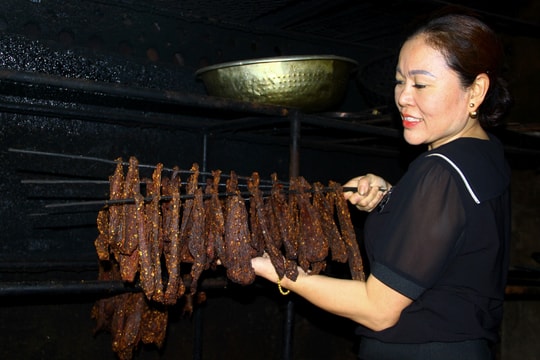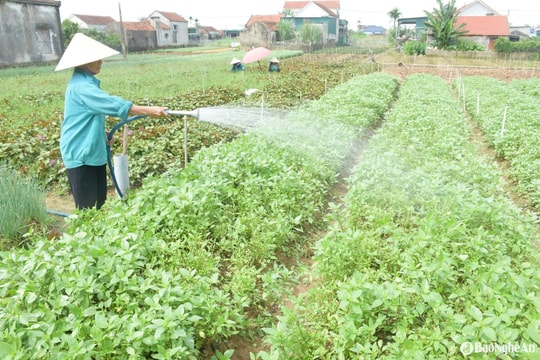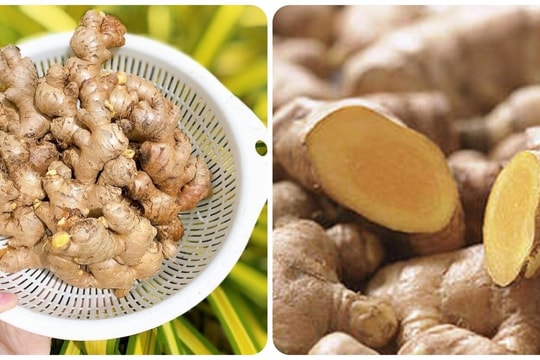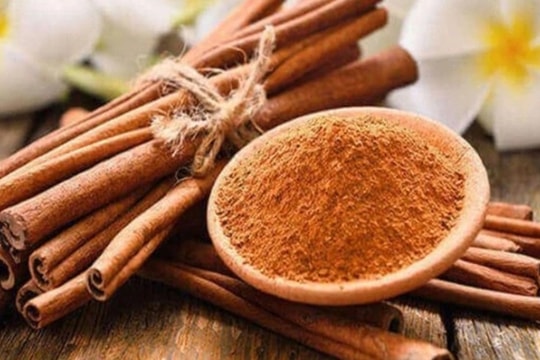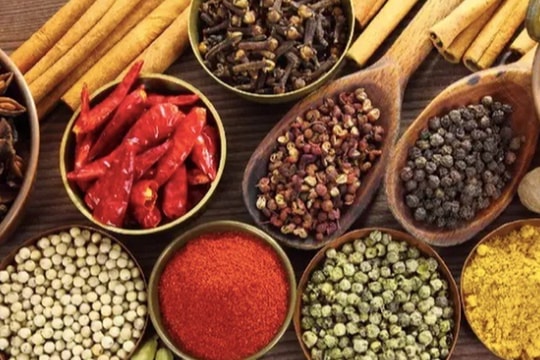4 Chinese spices that Vietnamese people eat every day
Stir-fried water spinach with garlic, stir-fried beef with onion, ginger-fried chicken, fragrant fried onions,... Vietnamese people's daily dishes almost all use Chinese spices for cooking.
According to statistics from the Ministry of Agriculture and Rural Development: dried onions, garlic, ginger, onions... are the most imported spices from China.
Currently, more than 100 tons of onions, garlic, ginger, and various kinds of onions are imported into Vietnam every day. The amount of these four spices imported each year is up to hundreds of thousands of tons.
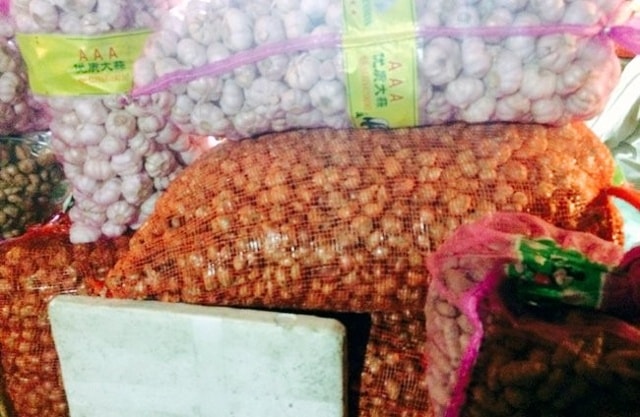 |
| Chinese onions, garlic, ginger, and scallions are piled up at the wholesale market. |
Vegetable and spice wholesalers at Hoa Dinh market (Bac Ninh city) - the capital of Chinese vegetables and fruits, revealed that the amount of onions and garlic they import from China to Vietnam and then distribute to wholesale markets across the country is up to 100 tons per night. Because Chinese goods are cheap, have beautiful designs, are easy to preserve, and are much more popular in the market than similar goods from Vietnam and Indonesia.
Chinese spices are therefore sold in abundance in the market and "disguised" as Vietnamese goods. Consumers buy them every day without knowing it.
Here's how to identify Chinese spices and vegetables:
Garlic
Vietnam has many garlic growing regions such as: Ly Son, Da Lat, Hai Duong... However, at the current market, according to traders, more than 80% is Chinese garlic.
It is worth noting that Chinese garlic is very different from Vietnamese garlic, so if you go to the market, if you are observant, you will be able to tell which is Vietnamese garlic and which is Chinese garlic.
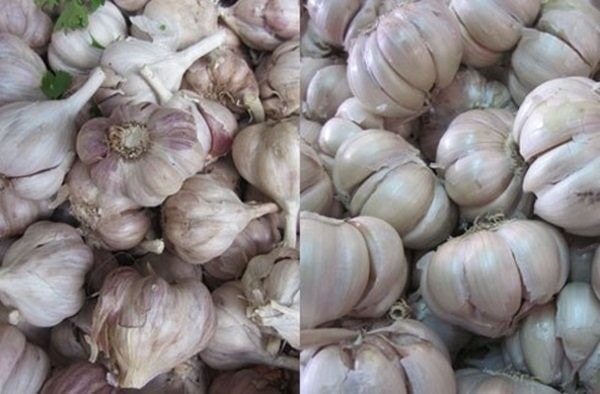 |
| Vietnamese garlic (left) has smaller bulbs than Chinese garlic (right) |
For example: Chinese garlic has large, even bulbs, white skin (very easy to peel), the garlic cloves in the bulb are very thick and even. When processed, Chinese garlic is less fragrant, with a slightly pungent taste mixed in when the garlic is crushed to prepare for stir-frying.
The retail price of Chinese garlic fluctuates between 35,000-40,000 VND/kg depending on the time, and if bought wholesale, the price is only around 6,000-8,000 VND/kg depending on the time.
Ly Son garlic bulbs are very small, the garlic cloves are also small, priced at a few hundred thousand VND/kg. As for Da Lat garlic and Hai Duong garlic, the outer shell color is usually darker than that of Chinese garlic, the cloves are also numerous but thin and uneven. The characteristic of Vietnamese garlic is that it is very fragrant, but it is a bit difficult to peel, so restaurants do not like it much.
Dried onion
Similar to garlic, Chinese dried onions also cover the markets and are extremely popular with traders and restaurants.
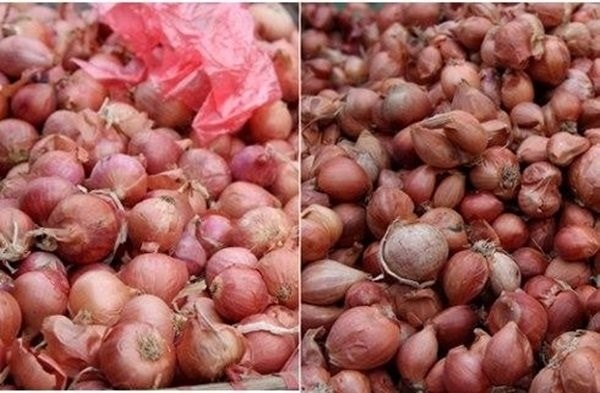 |
| Chinese dried onions (left of photo) have more even and beautiful appearance than Vietnamese dried onions. |
According to the traders, Chinese dried onions have large, firm bulbs, thin, shiny skin, are easy to preserve and do not spoil easily because they are dried quite well. The dried onions are extremely fragrant, suitable for the taste of people in the North. When peeling the onion, the inside of Chinese dried onions is usually white.
The price of Chinese dried onions is about the same as garlic.
As for Vietnamese onions, the bulbs are long, uneven, and look very unsightly. Peel off the outer layer, the onion inside is purple or slightly purple.
Onion
Mr. Nguyen Quoc Hung, Director of the Fruit and Vegetable Research Institute (Ministry of Agriculture and Rural Development), said that onions are root vegetables but can also be used as spices in many dishes, although not used as often as onions and garlic...
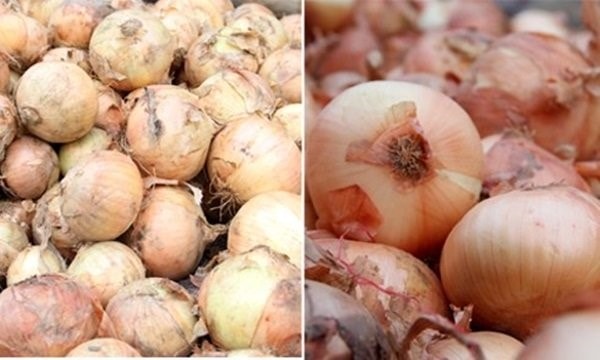 |
| Vietnamese onions (left side of photo) are ugly, while Chinese onions (right side of photo) are round, beautiful, and shiny. |
In the northern markets, especially in Hanoi, Chinese onions are sold everywhere.
Chinese onions have a clean, shiny, thin skin, and are dried by traders so they are not crushed or rotten during transportation and storage. In particular, the onions are firm and large. Meanwhile, Dalat onions are often very ugly, with a white outer skin, often scratched, and sometimes covered with dirt.
When peeling off the skin and using a knife to cut the onion to stir-fry, you will see that the Chinese onion has thicker leaves, while the Dalat onion has much thinner leaves.
Ginger
Ginger is a spice with many uses in cooking and treating some diseases. But few people know that, nowadays in big and small markets, ginger sold in the market is mostly imported from China, Vietnamese ginger is rare and scarce.
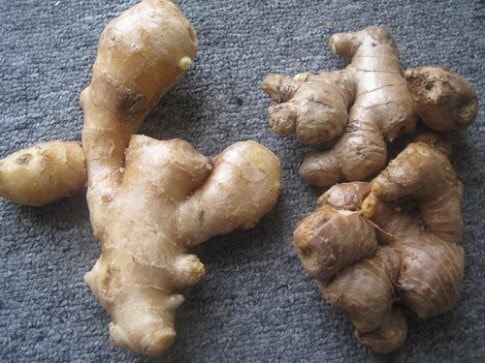 |
| Chinese ginger (left) is larger and lighter in color than Vietnamese ginger (right). |
Chinese ginger usually has two skin colors: yellow and pale yellow mixed with white. Ginger roots are usually smooth, plump, large, even, with few rough spots, and are very clean. Compared to domestic ginger, Chinese ginger roots are usually one and a half times larger, sometimes twice as large.
Ginger grown in water has a duller skin, rougher roots and nodules, and many branches. Chinese ginger is more beautiful than Vietnamese ginger, but in terms of aroma, Vietnamese ginger is “better” than Chinese products.
According to Zing.vn
| RELATED NEWS |
|---|

